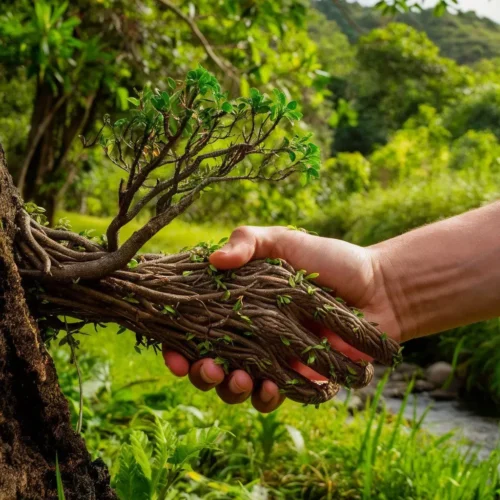In today’s rapidly changing world, the health of our environment has become a pressing concern. Climate change, deforestation, pollution, and the depletion of natural resources are just a few of the challenges we face. The good news is that each of us has the power to make a difference. By adopting sustainable practices and encouraging others to do the same, we can work together to protect our planet for future generations. In this blog, we’ll explore practical steps we can take to save our environment and create a more sustainable future.
Why Saving the Environment Matters
The environment is the foundation of life on Earth. It provides us with clean air, fresh water, fertile soil, and the resources we need to survive. However, human activities such as industrialization, overconsumption, and waste generation have put immense pressure on our ecosystems. The consequences are dire: rising global temperatures, loss of biodiversity, and increased natural disasters.
Saving the environment isn’t just about protecting nature—it’s about safeguarding our own well-being and ensuring a livable planet for future generations. Every small action we take today can have a ripple effect, contributing to a healthier, more sustainable world.
Practical Steps to Save the Environment
1. Reduce, Reuse, Recycle
The three R’s—Reduce, Reuse, and Recycle—are the cornerstone of sustainable living.
- Reduce: Cut down on waste by avoiding single-use plastics and opting for products with minimal packaging.
- Reuse: Repurpose items instead of throwing them away. For example, use glass jars for storage or turn old clothes into cleaning rags.
- Recycle: Properly sort and recycle materials like paper, glass, and plastic to reduce landfill waste.
2. Conserve Water
Water is a precious resource, yet it’s often taken for granted. Simple changes can make a big difference:
- Fix leaky faucets and pipes.
- Take shorter showers and turn off the tap while brushing your teeth.
- Collect rainwater for gardening or other non-potable uses.
3. Switch to Renewable Energy
Fossil fuels are a major contributor to greenhouse gas emissions. Transitioning to renewable energy sources like solar, wind, and hydropower can significantly reduce our carbon footprint. If possible, consider installing solar panels at home or supporting clean energy initiatives in your community.
4. Plant Trees and Support Reforestation
Trees absorb carbon dioxide and release oxygen, making them essential for combating climate change. Planting trees in your backyard or participating in community reforestation projects can help restore ecosystems and improve air quality.
5. Adopt Sustainable Transportation
Transportation is a significant source of pollution. To reduce your impact:
- Walk, bike, or use public transportation whenever possible.
- Carpool with friends or colleagues.
- Consider switching to an electric or hybrid vehicle.
6. Support Eco-Friendly Products
Choose products that are sustainably sourced, biodegradable, or made from recycled materials. Look for certifications like Fair Trade, Organic, or Energy Star to ensure your purchases align with environmental values.
7. Reduce Meat Consumption
The meat industry is a major contributor to deforestation, water pollution, and greenhouse gas emissions. Reducing your meat consumption, even by one or two meals a week, can have a positive impact. Consider incorporating more plant-based meals into your diet.
8. Educate and Advocate
Spread awareness about environmental issues and encourage others to take action. Support policies and organizations that promote sustainability, and use your voice to advocate for stronger environmental protections.
The Role of Technology in Environmental Conservation
Technology plays a crucial role in addressing environmental challenges. Innovations like electric vehicles, energy-efficient appliances, and smart home systems are helping individuals and businesses reduce their environmental impact. Additionally, advancements in renewable energy and waste management are paving the way for a more sustainable future.
The Power of Community Action
While individual actions are important, collective efforts can drive even greater change. Join local environmental groups, participate in clean-up drives, or organize awareness campaigns in your community. When we work together, we can achieve far more than we can alone.
Conclusion: A Call to Action
Saving our environment is not just a responsibility—it’s an opportunity to create a better world for ourselves and future generations. By making conscious choices in our daily lives, supporting sustainable practices, and advocating for systemic change, we can protect the planet we call home.
Remember, every action counts. Whether it’s planting a tree, reducing waste, or supporting renewable energy, your efforts matter. Let’s come together to save our environment and build a sustainable future for all.
Join the Movement
Start today by implementing one or two of the tips mentioned above. Share this blog with your friends and family to inspire them to take action. Together, we can make a difference. Let’s save our environment—one step at a time.
#SaveOurPlanet #SustainableLiving #EcoFriendly #ClimateAction
Feel free to customize this blog to align with your website’s tone and style. Let me know if you’d like additional sections or specific details!

